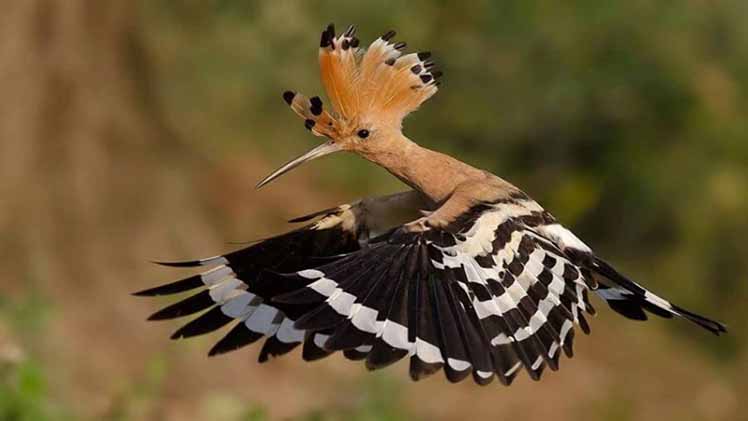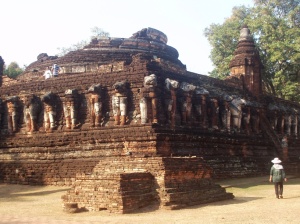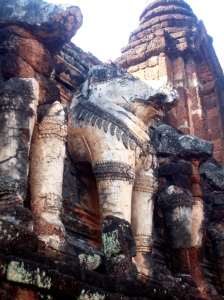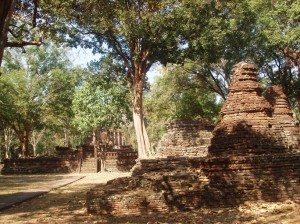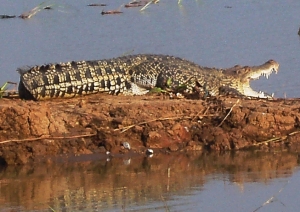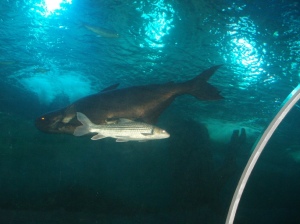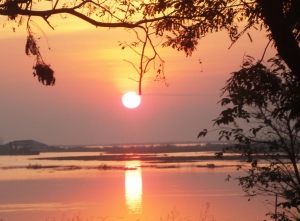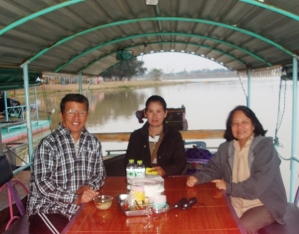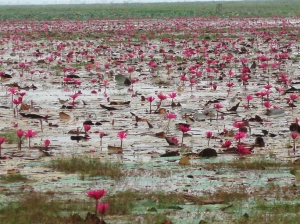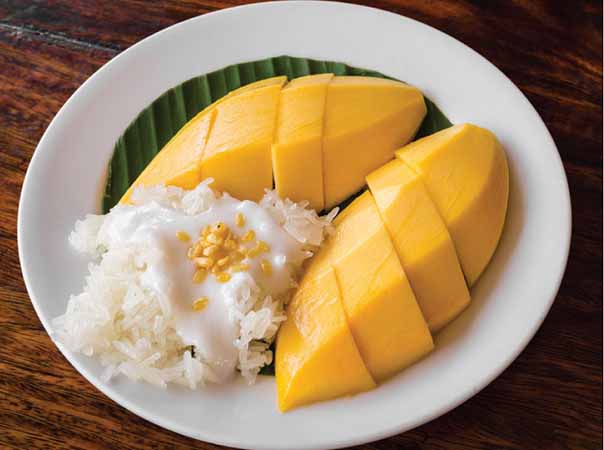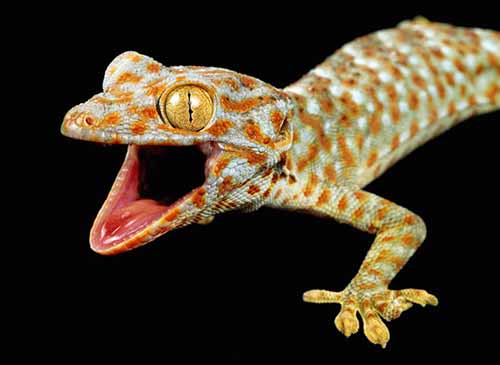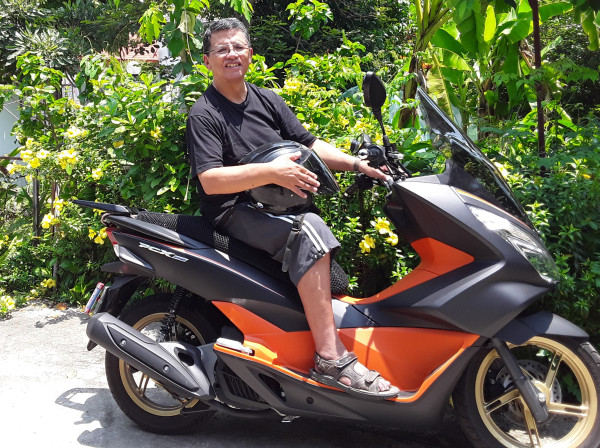Christmas Bird Watching on Thailand’s Unbeaten Paths
Originally posted on January 4, 2015
We made a New Year’s resolution a few years ago, that even though we live in the main tourist destination in Thailand, we should see more of the country, especially the less-traveled paths. Earlier this year I wrote about our journey to Kanchanaburui. During the heavy touristy season we think it best to be away from Chiang Mai. Let the Bangkok and Chinese tourists enjoy our town. It’s no fun for us being down town with tens of thousands of tourists who want to experience CM’s cool weather.
So here is another in my attempts to become a travel writer. This time it’s our annual Christmas bird watching trip.
Back home in the U.S. Christmas Day is special for bird watchers. That is the day they do the annual bird census with the goal to see if you can make it to 100 different species of birds (a century) in one 24 hour period. It has been a long time since we have been that ambitious but there is a large lake in central Thailand where we can see lots and lots of migrating water birds in one place; Beung Boraphet right outside of Nakorn Sawaan in Central Thailand. “Beung” means lake or swampy place, perfect for migrating water fowl coming from the likes of China and Siberia and needing a rest and feeding place before moving on. And here is how we did it.
We started out a few days before Christmas. The main reason for leaving at this time, besides getting there for Christmas, was to avoid being on the road during the “Dangerous Days”. This is the time around New Years when lots and lots of people are traveling and a large percentage of these travelers are under the influence of lots and lots of alcohol. Best to be home in bed or hanging out on a blog site or Facebook during the “Dangerous Days”; somewhere safe to avoid being a statistic.
Chiang Mai to Doi Tao
There is a new road, extending Chiang Mai’s Canal Road, down to Chom Thong with its important temple and meditation center, and passing the entrance to Doi Intanon, Thailand’s highest mountain. We heard there was bumper to bumper traffic going up Doi Intanon, and that 12,000 people decided to sleep up there to enjoy the 0◦ Celsius winter morning temperatures and see what frost looks like.
We go up the mountain often but never on a weekend or a holiday, and definitely not around New Years. So we drive right on past. (Just in case you are interested, here is why there was that bumper to bumper traffic), and (here is why we avoided it).
Our first destination was Doi Tao, a large lake where we might take a boat ride and see some birds (and maybe a turtle or two). Boy did we get that wrong.
Doi Tao (meaning Turtle Mountain) has long been famous as a beautiful and lush wetland. Instead, when we got there we saw a huge expanse of grass. And as with all touristy areas in Thailand it was bordered by shops, these selling all kinds of salted and died fish, supposedly from the lake. First question to the fish monger: “Where is Doi Tao Lake?” Answer: “Right behind me.” she said pointing to what looked like the Serengeti after a rain. “Where’s the water?” “No rains this year. Last year the water was up to here.” She said pointing to the back of her shop. Do many people come here now that there is no water? we ask. “Only people like you who get lost.” she answered.
We realize that the tales of how the north was in the midst of a serious drought came to mean something more than just a news story. Maybe we should start to worry a bit. (Doi Tao in better days before it tuned into a sea of grass.) (Doi Tao today.)
Doi Tao, no water, and no turtles. But we buy some salt fish, beautifully smoked, and head on to Kamphangphet leaving Doi Tao and praying for rain.
Doi Tao to Kamphangphet
I love ruins, and Kamphangphet has some great ones. It is a World Heritage Site, and though not as famous or restored as the beautiful ruins of Sukhothai, it still holds wonders.
The Elephant Temple
An elephant whose trunk long ago fell off
I love trying to picture what it looked like 700 years ago.
The ruins are free and they are right in the city. We spent a few hours exploring the ruins and resting up from the 4 hour drive. Then we head on to the river town of Tak.
Kamphangphet to Tak
Tak is situated right on the Ping River, the same river that flows past Chiang Mai. In Chiang Mai it is a slow, lazy river but here the current has picked up and it has become much wider. The market is right on the river bank and so was our hotel.
The Ping River from our hotel room
One good thing about traveling the unbeaten path is that you don’t get gauged with tourist prices. The cost of our hotel room with the spectacular view, 800 baht.
Next stop Nakhorn Sawaan
Our main worry on the drive from Tak to Nakhorn Sawaan (literally: Heavenly Town) was whether Bueng Boraphet was going to be like Doi Tao or not and be devoid of water.
Nakhorn Sawaan is a huge bustling town. Lots of Chinese merchants discovered long ago that a town on the confluence of 4 important rivers and on the main road north was a good place to do business. The Ping, Wang, Yom, and Nan rivers all converge here to create the Chao Phraya River which flows past Bangkok to the sea.
We avoid the traffic chaos of the city and drive on to the Bueng Boraphet Lake a few kilometers to the east. In keeping with our theme, here is the view from our lakeside hotel room. Cost: 800 baht.
The lake in the background, this time with water.
As an added attraction, this was on the beach right in front of our room.
A one-time-extinct-in-the-wild Siamese crocodile
No one is sure how the lake got its crocodiles back but they are here. This one was about 1 1/2 meters long and there are a number even larger. One guess is the the many floods we have had along with the growing number of crocodile farms created what Jeff Goldblum said in Jurassic Park that Nature will find a way.
There is a very nice aquarium on the park grounds next to the lake containing lots of the fish from the waters in and around the lake. Entry fee: 35 baht, but we get in for free as we are “senior citizens”. Ah, the perks from being old.
Big fish still in the rivers here
Later we walk gingerly along the lake front to a nice restaurant where we have some delicious and fresh lake-caught fish. Tomorrow we go to see some birds.
Bird watching at Beung Boraphet
Although the Tourt Authority of Thailand has pushed to make the lake a big tourist attraction it still is little known.
We wake up before dawn. Bird watching is a demanding endeavour. And here is what we encountered.
Christmas morning at Beung Boraphet
There are great flat bottom boats we can hire to take us out into the lake (Cost: 1,100 baht for 3 hour trip, breakfast included).
Most Thai tourist go to see the “Red Lotus Sea”.
We go for the birds, and since I am not a good enough photographer to capture Nature shots here is a link showing many of the birds we saw that day. Highlight of the day was seeing an osprey, a huge flock of thousands of whistling teal from Siberia, 4 or 5 different herons, anhingas, a tiny pigmy goose, and some mating and dancing Purple Swamp Hens with a number of their chicks hopping around on the lotus leaves.
After a great morning out on the lake we take a side tour to Uthai Tani and then to Chinat, two infrequently visited central Thailand provinces, just to say we have been there. The highlight was taking an old-time ferry across the Chao Phraya River.
This, in fact, was a shortcut.
After another night sleeping next to our crocodile it was time to move on and head to Uttaradit.
Nakhorn Sawaan to Queen Sirikit Dam in Uttaradit
All national parks and dams in Thailand have nice bungalows where we can stay. This one was right on the edge of the forest. Cost: 700 baht.
Jungle view hotel room
Before heading for home we checked out the dam.
The water level looked to be about 10 meters below normal.
And then we had to check out the largest teak tree in the world.
Not as impressive as the redwoods but it is more than 1,000 years old.
Queen Sirikit Dam back to home
Lots and lots of traffic as we head home, many heading for Chiang Rai. We get back just before the “Dangerous Days”, safe, sound, and recharged. We traveled through Chiang Mai, Lamphun, Kamphangphet, Tak, Nakhorn Sawaan, Utai Tani, Chinat, Uttaradit, Phrae, and Lampang provinces, and got home to some NFL games and to binge watch some TV while the traveling throngs were still on the road. A perfect way to start the new year.
Happy New Year to all.

